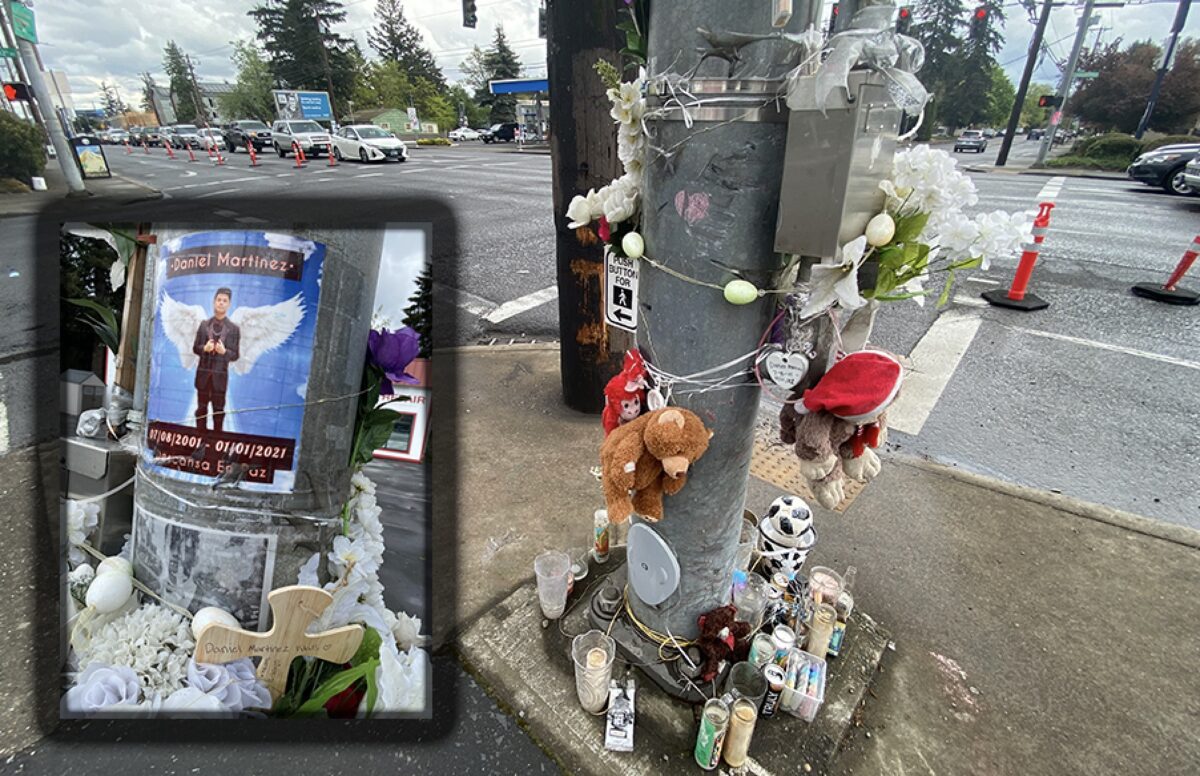
(Photos: Jonathan Maus/BikePortland)
So far this year our tally of Portland traffic fatalities stands at 28 people, a 115% increase over the 13 deaths we had at this same date last year. This comes after a record level of deaths in 2020 which the City of Portland called “unusual and tragic.”
With just four years until our 2025 “Vision Zero” goal of no more traffic deaths, we are headed in the opposite direction. It’s clear that despite both the Portland Bureau of Transportation and Oregon Department of Transportation saying they are committed to safety and zero deaths, they are not doing nearly enough to make it a reality.
For perspective, between 1998 and 2020 Portland averaged 33 deaths per year. At the rate we’re going — one death every four-and-half-days — we’ll hit that average before the end of May.
Keep in mind that the BikePortland tally is a bit higher than the Portland Police Bureau’s (we include suspected suicides, deaths that don’t involve motor vehicles, and so on). The PPB total stands at 24 deaths as of today, which is still an 85% increase over last year.
“We are always very cautious about defining trends over short time frames. That is especially true over as short a period as four months.”
— John Brady, PBOT
A closer look at the list reveals nothing too extraordinary, beyond the sheer volume of fatalities: the crashes were split evenly between city and state-owned roadways and 12 of the deceased were vulnerable road users (not using cars). The one thing that stands out is that we’ve had three double-fatal crashes that were caused by a person who was driving the wrong way on a major freeway.
While we grapple with these tragedies and the conditions that cause them, advocates and community leaders are organizing a rally to draw attention to the two deaths that happened two weeks apart at Northeast 82nd and Alberta last month. The plan so far is to meet at the intersection on Friday at 4:00 pm to draw attention to this crisis. “We demand an emergency speed reduction, as well as funding for safety improvements on 82nd Ave, followed by transfer from ODOT to PBOT jurisdiction,” said one of the lead organizers on Twitter Friday.
Advertisement
Among the speakers will be Oregon State Representative Khanh Pham, a former east Portland community activist who called for an emergency speed reduction and other measures last week.
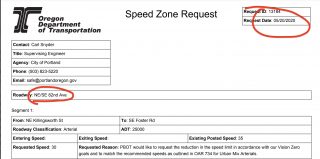
Asked about the possibility of the speed limit reduction last week, ODOT Region 1 Director Rian Windsheimer said his agency is, “In the process of considering a permanent speed reduction for all of 82nd Avenue from Killingsworth to Clatsop Street.” This review of the speed limit comes in response to a PBOT request that was filed in May 2020. ODOT has sat on that request for 11 months and is just now looking to expedite it after two more people died at the hands of their inherently deadly road.
In early April, PBOT released a Vision Zero dashboard to, “Help Portlanders better understand and track the bureau’s efforts to eliminate deaths and serious injuries from Portland streets.” The agency also recently updated their logo to include the slogan, “Realizing safety in all communities.”
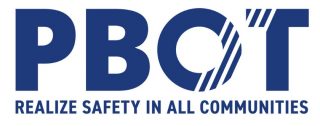
Back in February PBOT dissolved their Vision Zero Task Force in order to “engage a broader set of stakeholders”. One day after that announcement, amid another spate of deaths, PBOT Commissioner Jo Ann Hardesty took to Twitter to say, “I can assure you that myself and PBOT are digging deep into both immediate and long-term solutions to keep all Portlanders safe as they move around our city.”
Asked for comment today, PBOT Communications Director John Brady said, “Yes, there has been an alarming increase in traffic fatalities.” He said that even while their internal tally shows a 92% increase in fatalities compared to this date last year, “We are always very cautious about defining trends over short time frames. That is especially true over as short a period as four months.” “In fact, some of the fatalities are still being investigated, and it may be some time before we know definitively how they happened,” Brady added.
Brady offered a closer analysis of the statistics that show almost all of the increase has come from car and truck drivers and that the number of deaths to people biking, walking and using motorcycles have not changed. Brady also said crashes on ODOT-owned roads (freeways and urban highways) make up a majority of the crashes for the second year in a row (see graphic below) and that PBOT’s, “ability to affect the safety on state roads is very limited.” “It’s important for your readers to understand this critical distinction.”
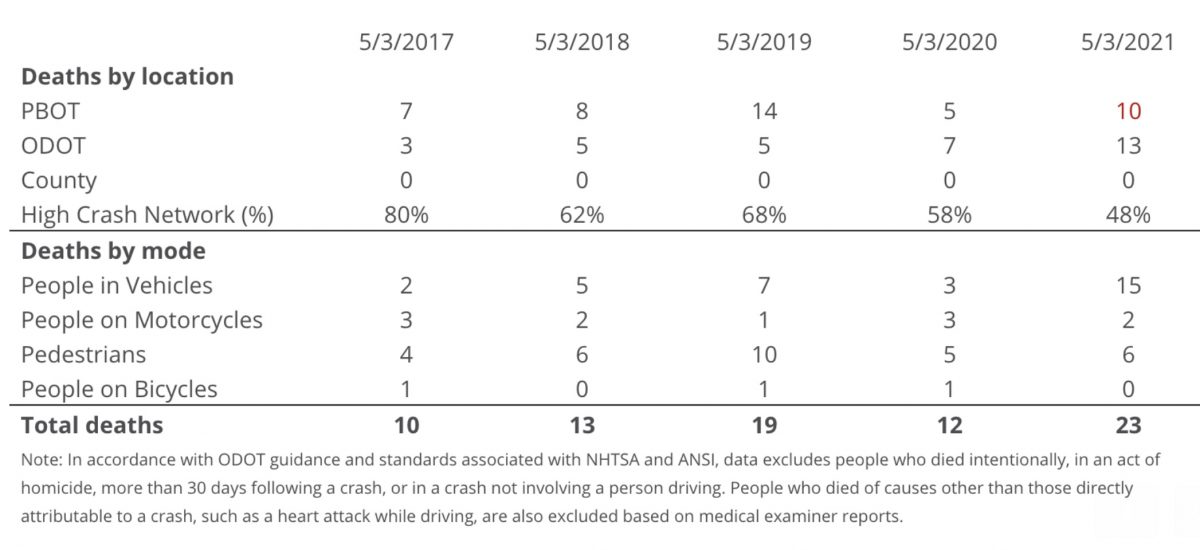
As our regional planning agency, Metro plays a key role in safety outcomes. They are a conduit for federal grant funding and their planners and researchers provide important modeling, statistics and analysis that informs many of the decisions made by PBOT and ODOT. Metro has announced a Regional Transportation Safety Forum that will take place May 26th.
— Jonathan Maus: (503) 706-8804, @jonathan_maus on Twitter and jonathan@bikeportland.org
— Get our headlines delivered to your inbox.
— Support this independent community media outlet with a one-time contribution or monthly subscription.



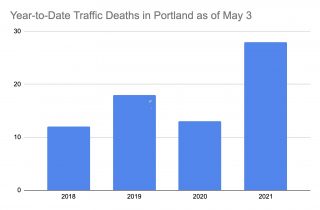


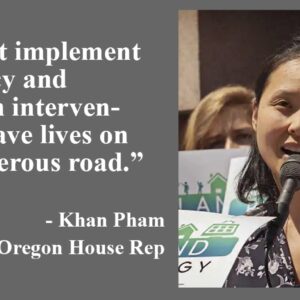
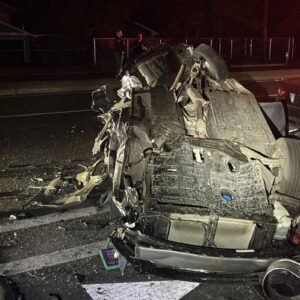
Thanks for reading.
BikePortland has served this community with independent community journalism since 2005. We rely on subscriptions from readers like you to survive. Your financial support is vital in keeping this valuable resource alive and well.
Please subscribe today to strengthen and expand our work.
I am so damn tired of writing posts like this…
High tech dashboards, new engagement strategies, safety forums, PR strategies that downplay what we all see and feel, and the slow march of incremental infrastructure updates will not be enough and have never been enough to counter the imminent threat we face on our roads. We need to get serious about automotive hegemony and the traffic violence it creates. We must not be passive readers of this tragic story but authors of our own fate.
We need to: Drastically reduce everyone’s exposure to cars and trucks, install traffic calming infrastructure that makes it harder for them to be used recklessly, make driving less competitive as a transportation option, create more physically-protected spaces for all road users, and we need to see a united front from elected and community leaders to bust down the political and special interest barriers that prevent us from moving forward.
And we must take bold action immediately.
Another person will die before this weekend. Will it be someone you love?
According to a 2019 Allstate Insurance study, Portland ranks 181st out of 200 large American cities on driving safety. Portland drivers have accidents at a rate almost 30% above the national average. Portland has poor drivers. Therein lies the problem.
Right. Oregon is just an outlier. It has nothing to do with a near absolute investment in car-centric design, and dis-investment in all other transportation modes for nearly a century. We just need more driver training or something.
Is MAX taking money from bike infrastructure, and better car infrastructure that would make streets safer for all users?
Portland is no more car centric than any other place, so the fact that we ranked so low does mean something.
Why do you think a higher accident rate means drivers here are poorer? It could also mean poorer infrastructure, among other things.
Imagine what would happen to the accident rate if the City turned off all the street lights tonight, or all the traffic signals tomorrow. The accident rate would go up, even though the drivers would be exactly the same people who were driving today with fewer accidents.
One of the interesting factoids from the Farmers stats was that they found a much higher rate of ‘hard braking’ incidents amongst Portland drivers. They installed electronic sensor/recording devices on customers’ cars and found the info. btw I had one of them on my car for a year, voluntarily to achieve a lower premium. This is an indicator of distracted driving and/or excessive speed, not street design flaws.
It could be either. I see hard braking in congested locations where people are making sudden lane changes, merges, etc. Poor signage (so people don’t see what lane they need to be in until the last second), onramps that enter the freeway from the left and then require them to change several lanes quickly to get to an exit on the right, poor lighting, lack of marked or signaled crossings so that people are crossing where drivers don’t expect or have good visibility of them, overgrown trees blocking stop signs until you’re right at them, the country’s smallest downtown blocks that means especially closely spaced intersections and lots of required lane changing in a short distance…those are a few design flaws/issues that contribute to hard braking.
I brake hard sometimes driving downtown at rush hour, but rarely elsewhere. It’s not because I’m a poorer driver downtown. It’s the infrastructure and conditions that are different.
It’s good to have awareness of my driving actions, but if I know that bad stuff keeps happening in a particular place, should I do something differently?
I can agree you about infrastructure. It’s my opinion that the very traffic design that allows a person to perhaps travel 80 blocks on NE Glisan without stopping leads to an aggressive approach to controlled intersections.
Drivers focus on ‘making the light’ because they know that in Portland hitting the tail of one green signal leads to a stretch of relatively open road and a sequence of more green lights. Sooner or later this behavior leads to some hard braking.
Right! The Allstate’s “America’s Best Drivers” ranking measures Average Years Between Collisions, there is no other metric they are taking into account. They list others in their table, but the ranking is simply AYBC by city. There are so many factors that affect this metric. It is an aggregated actuarial measurement that helps them determine how risky it is to insure an average driver in each city. It is not a measure of how good drivers are.
One really obvious confounding factor is time spent driving. Boise is ranked 2nd with a AYBC of nearly 14 years and Portland is at 181st with 7. But Portland commuters spend over 40% more time on average commuting, 26.1 min vs 18.4 min. This reduces the difference significantly, from 100% to 38% when looking at AYBC/daily commute hour. Still a difference, but certainly there are other factors that should be also normalized before any real driver “Bestness” could be discerned from AYBC.
Should drivers be trained better, with more required to get and keep a license? I think so. But this tribal, “those people are bad drivers over there in Shelbyville/Eagleton” is a lazy and ignores so many of the structural problems that contribute to auto violence rates. It’s a great example of Fundamental Attribution Error.
“It could also mean poorer infrastructure”
It could, but as someone who is visited a lot of other cities, and who thinks about transportation a lot, I have never observed that Portland seems categorically worse than other places. That’s an anecdotal observation, of course, but if our roads were that much worse I would have expected to notice.
Accident rate and fatality rate might be linked, but you will need to provide more evidence. Fatalities per 100,000 residents or fatalities per 100,000 VMT are a much better measure of safety. Oregon is pretty middle of the road. Notice the states that lead the pack:
Alabama
Mississippi
New Mexico
South Carolina
Wyoming
https://www.iihs.org/topics/fatality-statistics/detail/state-by-state
Portland has fairly congested roads, so we are going to have a much higher-than-average rate of minor crashes.
Thanks Steve. But the only way we make this better is by moving past the blame game. The mission is to create “safe system” where mistakes don’t result in death and it’s less likely to make mistakes in the first place.
I was going to say something similar to this but you said it perfectly so I’ll add to this.
Despite what obstructionists say, now is the perfect time for a transition of our infrastructure(arguably 4 months ago was the perfect time to start but that’s behind us). Last night I went around looking for any changes as I haven’t been able to get out and go look at anything for at least a year. I was so disappointed to see that most of the changes are either in the paint or the occasional center refuge island at best. The most costly but least effective treatments that I’ve seen are those small rubber bumps meant to slow people down in turns and flex posts to create a bulbout. In my area, it seems like the plan is to sprinkle some diverters around, which is great if it was part of a larger circulation plan, but the “in Motion” plans get watered down and become spot treatments at best. Just because the sign on NW Marshall says bikes can take full lane doesn’t mean the physical dimensions of the street will enforce that.
The city obviously lacks the tools to implement Vision Zero. It needs to form a systematic safety plan that guides its projects, because spot treatments and ad hoc projects will only add to the unpredictability and lead to more conflicts. It also seems to me (as demonstrated by Hawthorn) that the city is avoiding fill building to building/lot to lot street reconstructions which are a must in some places with 3 foot sidewalks and little(sharrows don’t count) to no bike infrastructure.
The only way we’re going to fix this is by separating the uses in areas where conflicts are high or speeds don’t allow a mix of uses. In places with low speeds and where drivers are expected to share the space, the streets need to be designed as such. I have to wonder how much of this incompetence stems from our form of city government. There’s also the issue of ODOT, so the state isn’t off the hook either. We’ve got a long fight ahead.
That’s one way to look at it – the other is to investigate why 180 other cities do it better, likely with similar tools.
They don’t do anything better, because the “Allstate Insurance Study” is not a good source of data for traffic SAFETY.
The tools exist and many of them are clearly in Portland’s Vision Zero plan. What Portland lacks and continue to lack is the will/desire to fund and implement Vision Zero infrastructure (that would, by definition, greatly inconvenience people who drive).
Portland excels at multi-year stakeholder processes that eventually release “plans” to great fanfare that are essentially shelved in a few years. Vision Zero is just one of many such plans/declarations/resolutions (e.g the 2030 BikePlan, Climate Action Plan, Transportation System Plan, 100% Renewable Resolution etc) that may help assuage white liberal guilt but were never intended to change much of anything.
Sadly, I’ve seen recently similar headlines from other cities in the US. The Covid reduction in traffic facilitating more speeding was probably responsible for some of last year’s spike, but not sure that explains things now that traffic levels have risen back to close to pre-pandemic.
We continue to have a cultural acceptance that this is just a way of life. My guess is that almost everyone on this site has known someone either seriously injured or killed in a transportation crash. Extend that out to the larger community and that is likely true, too. And yet we continue on like it doesn’t happen. So many lives impacted. So much trauma.
What measures do you personally take to make yourself safer as you ride your bike; particularly as you ride on the street in bike lanes, and not on trails etc?
Each of us has to answer this question. If you merely depend on other people for your safety, and the only thing you do is complain about accidents on the internet then nothing will ever change.
How about E N F O R C E M E N T?
Every day I see people exceeding the speed limit by 20 mph, blowing through red lights, rolling through STOP signs faster than I can run, failing to yield to pedestrians….
We have tried everything else and look where it’s gotten us.
Ding ding—we have a winner! However in the current Portland political climate no one wants to admit that the lack of enforcement is at least indirectly tied to increased fatalities. Everyone thinks automated enforcement blanketing Portland will solve the problem but good luck getting that approved by the Legislature let alone getting it installed on key roads in the next 5 years.
So what is your favorite city general-fund program you’d like to see cut to pay for increased enforcement? Remember, the more you cut, the more you can afford to increase enforcement… to a point. Maybe cut Parks & Rec? Or how about Fire?
The state might allow you to have more speed and red light cameras, maybe. And recruiting more and better police cost a great deal, especially in cities like Portland that keep threatening to undermine the personnel by suddenly cutting their budget, sapping morale.
Or you could (gasp!) raise taxes…
The Oregon Constitution Article IX, Section 3a allows the highway funds to be used for “operation and use of public highways, roads and streets….” It surely seems to me that enforcement could be interpreted as an operational expenditure. Let’s raise the gas tax 5 cents per gallon every year the fatalities increase and devote part of that to enforcement. The general fund need not take a hit.
Nobody want to admit the police may be beneficial in some capacities.
really Middle of the Road Guy? I’ll admit that. And have admitted that for years. Also, I’ve heard staunch police critic and PBOT Commissioner Jo Ann Hardesty acknowledge that police have a role in our city, just a much more limited one than they have now. Sorry if the world isn’t as binary as your preferred narratives would like it to be.
Or as binary as others see it as well 🙂 ACAB is a pretty popular slogan amongst the local progressives.
It’s funny. When I drive to Washington or California, as soon as I cross the State line, I begin paying more attention to my speed. I almost never see an OSP car on the more rural highways that I travel (31, 395, 39, etc.). Especially California, I begin to notice a CHP officer more frequently. Traffic enforcement is a ‘numbers’ game and Oregon has been drawing down its highway enforcement for decades. and, drivers know this. Same with Bend, where I live. I was talking to a traffic officer last week at the scene of a crash, and he said he was the only officer on traffic duty at that moment, mid-day, in a City approaching 100,000 with many bad drivers.
There are numerous studies showing that Oregon is dead last out of all 50 states and the District of Columbia in numbers of law enforcement per thousand residents. Portland is just as bad on a per capita basis compared to large cities across the US. The ACAB crowd will take pride in those numbers. I sure don’t. Anyone who doesn’t think our increasing fatalities and serious injuries are not related to the lack of law enforcement resources in this state simply has their head buried in the sand.
If they are related, then should we close to number one for injuries and fatalities, rather than somewhere close to the nationwide average?
https://www.iihs.org/topics/fatality-statistics/detail/state-by-state
This seems to indicate that there is very little correlation between police funding and traffic safety. The issue is that the odds that a given dangerous driver will be pulled over and given a ticket is close to zero (even in states where enforcement is much higher). It just doesn’t register with most drivers and alter their behavior. Speed and red light cameras being widely deployed would be significantly more effective, because drivers would know that they will get a ticket every time they break the law. That is how you change behavior.
Some of the more conservative advocates for police reform express interest in getting police back on traffic duty and other things they are specifically trained for, instead of being constantly expected to respond to a million different situations they have little or no training for, like mental health crisis. This makes their job more stressful and attracts the wrong kind of people into police work, people who feel up to the challenge of trying to control everything they see instead of sticking to a better defined and specialized job description. Better defined also means more accountable, potentially. Which potentially means there will also be less misconducted or biased traffic stops. This doesnt necessarily mean having more boots on the ground either, it would likely mean less. A lot of bad drivers are repeat offenders, and a lot of traffic crimes go uninvestigated and unpunished because there are not enough people doing the desk work.
We already have dozens of other agencies trying to provide more specialized service, including first-response, which would allow police to enjoy a more limited and qualified role, but these agencies are under-funded. Animal control and protective services is a good example of a public service that partners with private and non-profit agencies. But in many cases our city relies on explicitly private interests to fund public safety, and there are huge gaps. I wish we could just fund the things that work, asking police to help a non-violent drug addict is like asking a dentist for a haircut. While they are getting a lobotomy, someone else out there has a toothache.
Imagine if Portland hired, say, 50 traffic enforcement staff? They don’t need to be armed officers; we need to create a new para-professional category. What would it cost $5 million a year? Uh, no, somewhere between zero and $2 million after fine collections. Can you imagine how traffic behavior would change? It would be signficant, maybe dramatic. and much cheaper than even a small portion of street enhancements.
I don’t think many people would want to sign up for a job where you are pulling over potentially armed people and then giving them a ticket for a driving infraction (something that sends many people into a rage). Also, what happens if the driver is DUII? Is this unarmed person supposed to arrest them? Call for backup?
In regard to making driving less competitive to other transportation options: it bothers me to no end that almost all of Portland’s renowned light rail system has been built parallel to our highways. This is the reason that I voted no on the latest transportation bill; because it did not place the MAX line along people’s desired destinations. If our light rail provided access between neighborhood centers (the places where people actually wish to go for retail, jobs, school, housing, eating, bars, etc) where driving is not as accessible, I believe people could justify giving up their cars permanently. Instead we have a rail system that allows more people to drive or ride to and from downtown and their suburban homes where they CERTAINLY own their own motor vehicle. I predict we will not see a reduction in traffic deaths anytime soon because everyone is still driving and the latest transportation proposals do little to change it or outright make it worse.
It’s been years since PBOT had a leader (or even a political candidate) with the policy and managerial chops to run the bureau. We desperately need to ditch this mayor-commissioner system.
From the crashes I’ve witnessed and friends who have been victims (or in rare cases perpetrators), gross generalizations of crash data, as with gun violence and murder spikes, really doesn’t do anybody any good. Sure there are too many cars and too many guns, but each case is unique as are the circumstances. Most drivers involved in fatalities do not go out of their way to hit people. There is negligence, there are distractions, people do fall asleep, but I have a good friend who got hit by a guy who had a heart attack just before he went 55 mph in a downtown 20 mph zone – aside from adding some sort of device to govern your speed based on your pulse, I fail to see how that crash could have been prevented by anyone (I’m happy to report that both drivers survived the crash without life-changing injuries).
Your community is seeing a spike in traffic injuries and deaths, and so is mine. Homicide rates have doubled here, especially if you happen to be born Black. When the pandemic started last spring, sociologists did in fact warn that as our society closed down, domestic violence and homicide rates would rise, as they have in fact done so. Is it possible that the increase in violence is also affecting our collective driving habits? Or maybe are our cities getting bigger and more dense, but without the infrastructure (or mass transit) to keep pace?
There is of course no easy fix, I’m sorry to report. Of course we’d all like more enforcement, preferably without racial bias and harassing the innocent, but none of us are willing to pay for extra police or allow for Big Brother to watch our every movement with security, speed and red light cameras, even as we allow and even actively assist commercial high-tech companies track our every movement using our cell phone GPS.
A few months ago on BP someone sent a link to an article on traffic violence in 1900 in NYC, of horses beaten to death and left to rot on city streets, lots of human fatalities, all the same crap and stink but without motor cars.
Or as the NRA or AAA might put it, cars don’t kill people, it’s the people driving the cars who kill people, usually accidentally, using a deadly weapon.
Well that begs the question – why not make the weapons less deadly? Why was the car driven by your example heart attack victim able to go 55mph in a 20mph zone? My cell phone GPS can tell me what the speed limit is on a given stretch of road (i.e. the Waze app). Why can’t the car operating system know that and limit speed accordingly? That would have made that crash less deadly, at least. It doesn’t all have to be street design.
JM, that pic appears to be 112th and Division from the NW corner. Regardless it’s a top 10 High Crash Intersection in the city. Three more Top 5 within a half mile.
The Outer Division Multi Modal Safety Project was supposed to address these very fatal crashes and dangerous conditions. Alas, a project that was supposed to be finished in 2018 wasn’t even fully funded until 2020. Remember, then commissioner Saltzman came to East Portland to address the pedestrian fatalities on Outer Division and apologized for the ODMMSP not being completed.
SOME THINGS NEVER CHANGE
At some point I hope enough safety advocates–and eventually the larger public–will come to the realization that PBoT administration has no concrete impetus to build safe infrastructure. Portland safety advocates have had faith in an odd narrative of hoping for transformative leadership, giving PBoT engineers the benefit of the doubt despite clearly unsafe design (they’re well meant), assuming VZ data will change design criteria, looking at future plans assuming they are as good as PBLs on the ground etc. PBoT, like many DoTs design roads for car capacity and parking, and provide space for other modes if that extra space exists. This has led to a predictable, decade-long upward trend in road deaths, and an unprecedented decline in bike modal share from 8% to 5%.
My hope is that eventually safety advocates will start to figure out the only likely means for change will be via legislation or lawsuit. Institutions do not change because of good intentions or strong feelings.
Remember this: Portland is always just a couple years from massive cultural transformation; It would only take a couple years worth of budget to install a physically separated network of PBLs. Please consider supporting the Lawsuit to hold PBoT to the Council-adopted city plans and policies (ie the 2030 Bicycle Plan, the Transportation System Plan, the 2015 Climate Action Plan, the Climate Action Through Equity Plan, and the Vision Zero Action Plan). And let’s pass the 395 bill.
I would like to see see more thought into construction detours. While building better, safer infrastructure for pedestrians & non drivers, the detours (or non detours) are often very dangerous for non drivers. For example, when the sidewalk by a busy street is blocked off at one end, how often do you see “sidewalk closed ahead- use other side” signs that are plainly visible from the corner? Almost never.
I can not even tell you how many times I’ve been walking on the sidewalk with my walker, having seen NO sign an I’d see a sign in the middle of the sidewalk, *maybe* 5 or 5 feet before the blockage. There may, or may not be any blocked out area for you in the street.
Hopefully the new PBOT logo will help.